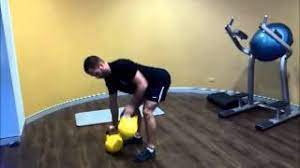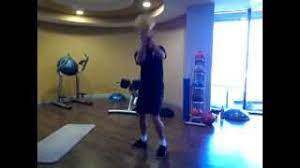Shoulder Health: Balancing Pulls & Pushes by Boris Bojanovic
As trainers we see this all the time. Probably not as bad as this example but there is a definite tendency towards forward shoulder & head posture in the average person due to the amount of time we spend at computers & in front of TVs.
This forward posture is an imbalance of muscle tightness & length around the scapula & thoracic spine. It’s known as Upper Crossed Syndrome. The general pattern results in tight pecs as well as loose/weak rhomboids & lower traps. This is further exacerbated by the fact that regular gym-goers tend to train the muscles which they can see in the mirror, i.e. the pecs, often neglecting the upper back muscles, i.e. rhomboids & lower traps. Just think about how often you see people doing push-ups, bench presses, flyes, pec deck compared to rows, pulldowns, chin-ups, reverse flyes? The pattern here being that on top of forward posture people generally push more than they pull.
So what?
Ask them how their shoulders or neck are feeling & you’ll probably find that they have niggling pain in the area or at least discomfort when doing certain movements or exercises, such as pressing overhead.
What can you do about it?
Apart from stretching the tight areas you also need to strengthen the loose/weak areas. While kettlebells aren’t ideal for horizontal pushing exercises, there being only two major exercises, the lying chest press & push up on kettlebells, they are a great option for pulling exercises. A great way of rebalancing the muscles around the scapula is to include more pulling than pushing exercises in clients’ programs if they have Upper Crossed Syndrome or especially if shoulder pain on pushing or overhead activities. A ratio of 2:1 or even 3:1 pull to push for a short time in their programs should do.
The Kettlebell Pulls
With all rowing exercises the main cue is to pull the scapula back as the arm moves backwards, not just allowing the shoulder to stay forward as the elbow pokes backwards. Make sure your clients incorporate that in the following kettlebell row options.
The basic kettlebell row is a great place to start because it’s a pretty stable position which allows the client to focus on one shoulder at a time while the back is supported with the other arm. To further add challenge & benefit to the exercise you can incorporate a thoracic rotation element.
Another option is the two kettlebell row, which is a more balanced exercise as it allows the use of both arms. The challenge in this exercise is a higher demand on lower back control & hamstring flexibility. It can be performed as an alternate repetition exercise, with or without rotation, or as a double kettlebell exercise which requires a lot of lower back strength & stability.
The kettlebell double high pull is a great dynamic rowing exercise which incorporates the whole back side of the body, including the posterior chain.
The renegade row is as much a core exercise as a pulling exercise & therefore a great whole-body integrated exercise which trains the body the way it’s supposed to be used – core stable while the arms or legs are moving.
For for Newsletter


